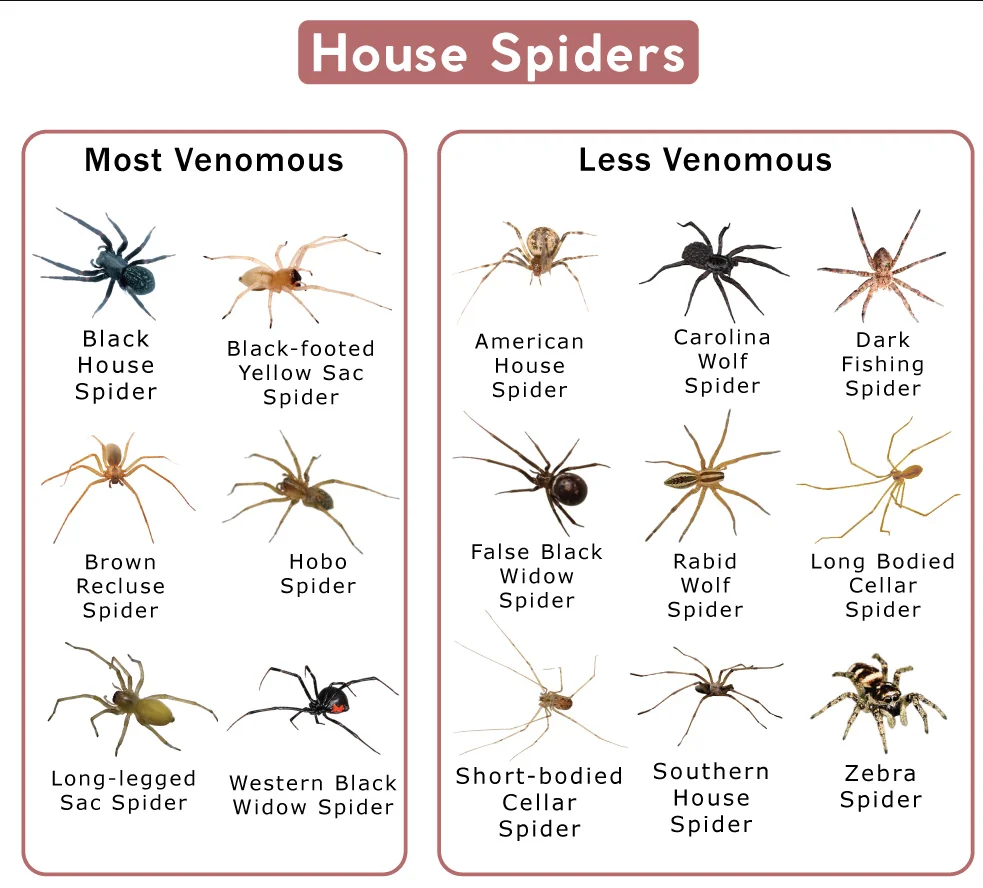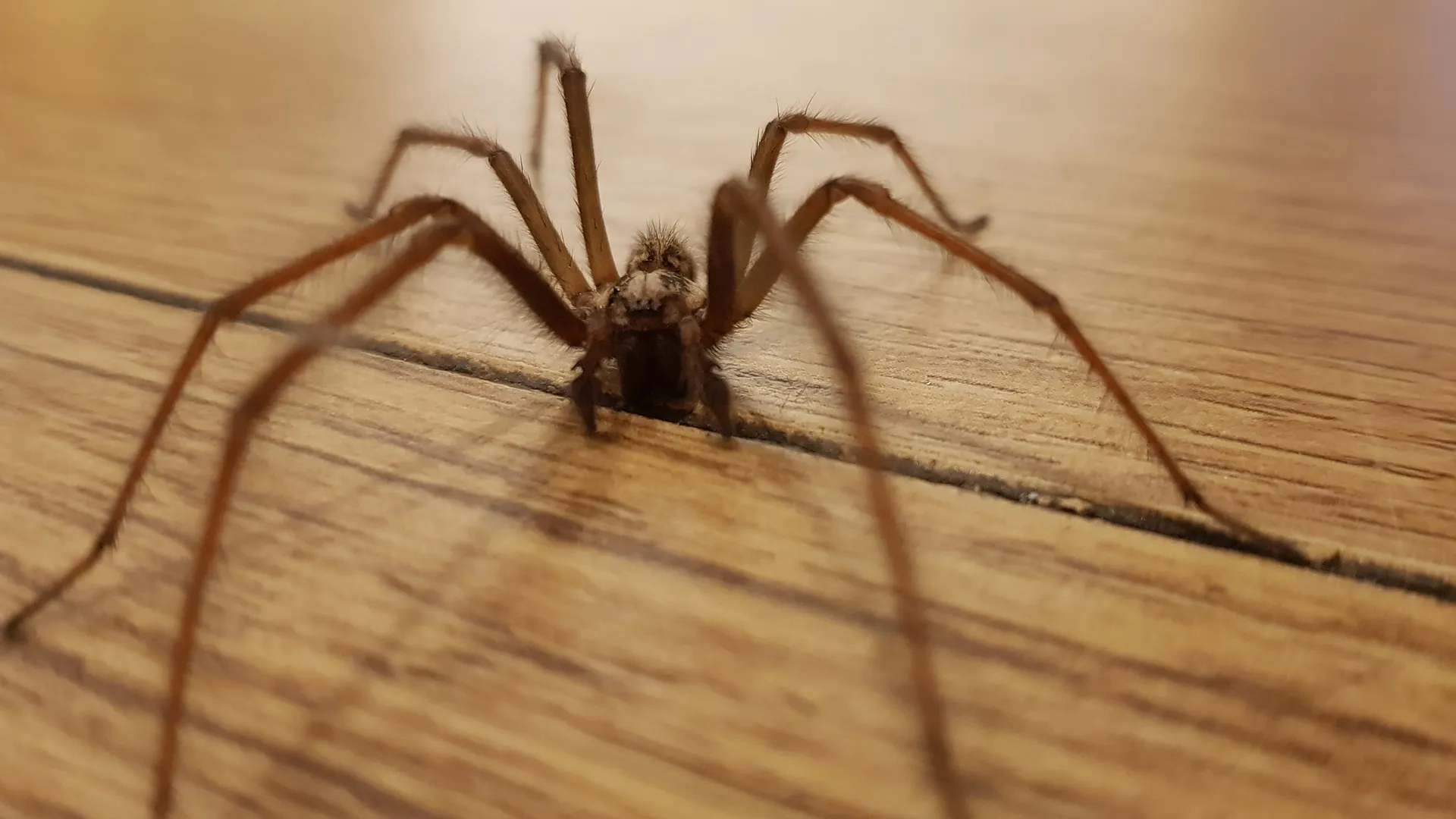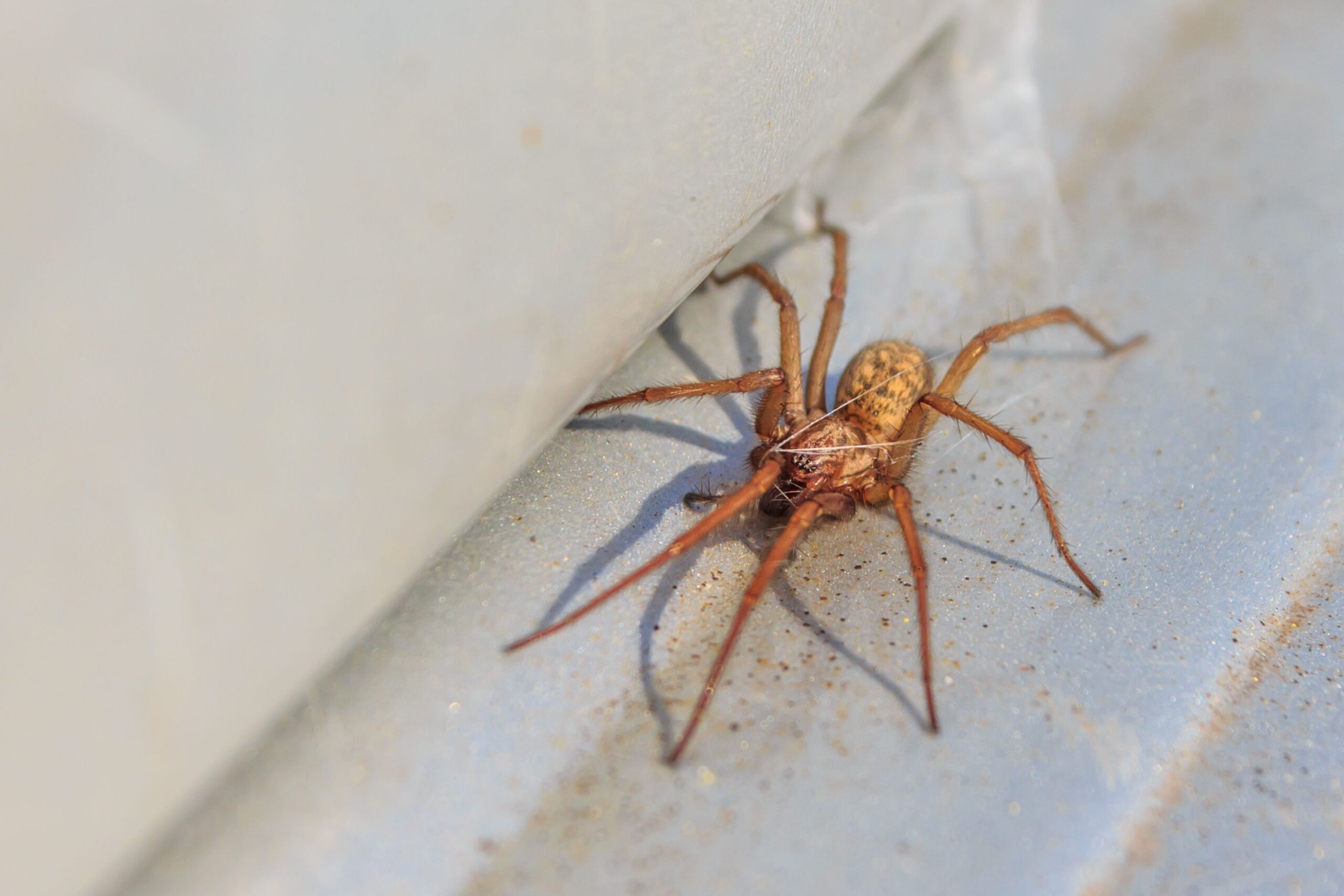Florida’s subtropical climate—known for warm temperatures, high humidity, and short, mild winters—creates the ideal environment not just for residents but also for a variety of pests, including spiders. In Greenacres, where landscapes are lush and homes or commercial buildings may feature small openings or abundant outdoor lighting, spider populations can establish themselves easily. Many spiders help control other insects, but they become unwelcome when they build webs inside a residence, leave egg sacs on walls, or cause anxiety for occupants with frequent sightings.
This service page explains why spiders thrive in Florida, how you can tell if an infestation is taking hold, and why reaching out to a professional spider extermination can be critical. While spotting the occasional spider might not be alarming, multiple webs or signs of breeding can indicate a bigger issue. By learning about spider habits, the best strategies for treatment, and preventative measures, property owners in Greenacres can protect their indoor and outdoor spaces from these eight-legged invaders.
Why Spiders Flourish in Florida

1. Warm, Humid Conditions
Spiders prefer moderate to high temperatures and thrive particularly well when moisture is plentiful—conditions that Florida delivers almost year-round. Even in cooler months, brief dips in temperature seldom curb spider activity for long. If they gain access to temperature-controlled interiors, spiders can stay active continuously, feeding on indoor insects and reproducing unchecked.
2. Plentiful Insect Prey
Spiders feed on other bugs such as mosquitoes, flies, moths, and roaches. Because Florida’s climate encourages robust insect populations, spiders rarely struggle to find a steady food supply—especially around well-lit, humid areas in Greenacres. When their prey is abundant, spider numbers can grow accordingly, with multiple species sometimes sharing the same territory.
3. Numerous Hiding Spots
Florida homes often include lanais, screened porches, or older construction materials that have gaps or small cracks where spiders enter. Outdoors, thick vegetation, palm fronds, and neglected debris piles can house orb weavers or ground-dwelling spiders. Inside, spiders tuck themselves behind furniture, in corners, or along ceiling edges, building inconspicuous webs until they multiply.
4. Lack of Extended Freezes
While some U.S. regions experience harsh winters that temporarily suppress spider populations, Florida seldom drops low enough for long enough to significantly reduce spider activity. This allows spider eggs to hatch year-round. Coupled with central heating or air conditioning inside buildings, spiders face few climate-related barriers and can sustain continuous breeding cycles.
Telltale Signs of Spiders
1. Webs or Egg Sacs
The most visible sign of spider presence is typically the webs they construct in corners, along baseboards, near light fixtures, or in closets. Some web-building spiders create intricate orb webs, while others spin messy, tangled “cobwebs.” Egg sacs—small, round or teardrop-shaped bundles of silk—often appear in or near these webs, signifying active breeding and potential population growth.
2. Frequent Spider Sightings
Seeing a random spider occasionally might be normal, but repeated sightings—especially of a similar species—suggest a consistent food source and established hiding places. When multiple spiders appear in different rooms, it indicates that they could be reproducing indoors or using the building’s structure to move around easily.
3. Insect Carcasses
Because spiders feed on insects, you might notice leftover bits of prey in or around webs. Dead insects such as flies or moths trapped in sticky silk, or small piles of exoskeletons, hint at ongoing feeding activity. Where these accumulations exist, you can bet the spider is active nearby, taking advantage of a steady bug buffet.
4. Musty Odor in Heavy Infestations
Large or prolonged spider infestations can produce a faint, musty odor from accumulated egg sacs, webs, and prey remains. Although not always present, an unexplained odor combined with webs or sightings may help confirm a more serious spider issue.
5. Possible Bites or Health Concerns
Most Florida spiders don’t pose a major threat, but a few species—including black widows or brown widows—deliver potentially painful or medically significant bites. If you experience unexplained, itchy, or swollen bite marks, consider checking areas where you suspect spiders could be hiding.
Risks of Ignoring Spiders
1. Rapid Population Growth
Spider numbers can climb quickly if egg sacs hatch, releasing dozens or hundreds of spiderlings. Without timely intervention, these spiderlings disperse throughout the property, building fresh webs and producing more egg sacs in turn.
2. Anxiety and Unpleasant Encounters
Some residents experience increased stress or unease at the sight of multiple spiders indoors. Businesses that fail to address spider infestations may face negative customer impressions, especially if webs accumulate in visible areas such as lobbies, restrooms, or display windows.
3. Potentially Dangerous Species
While most Florida spiders aren’t lethal, certain widow varieties or recluse-type spiders may cause significant harm if they bite. Overlooking spider infestations heightens the chance of a surprise encounter. For families with small children or pets, even the remote possibility of encountering venomous species is concerning.
4. Unsightly Web Accumulation
Webs collecting dust and debris around windows, ceiling corners, or storage rooms can make interiors appear neglected. In commercial settings, employees or clients may judge the overall cleanliness or management practices negatively if webs abound. If left unaddressed, these webs become a persistent maintenance issue.
5. Indirect Impact on Insect Problems
The fact that spiders appear in larger numbers might point to a broader insect presence nearby—like roaches, flies, or mosquitoes. By ignoring spider infestations, you could also be missing an underlying issue with insect control, inadvertently allowing future pest problems to worsen.

Why a Professional Exterminator Is Crucial
1. Accurate Species Identification
Florida hosts a range of spider species—some harmless, others more concerning. A spider exterminator identifies whether your property faces wolf spiders, orb weavers, widow spiders, or other varieties. Knowing exactly which species is present shapes the most effective treatment plan and ensures you take any necessary precautions for species that pose higher risks.
2. Comprehensive Inspection
Professionals don’t just treat visible webs. They check hidden spaces—like behind appliances, in wall gaps, or under eaves—for webs, egg sacs, or signs of insect prey. This thorough approach exposes all spider hideouts and addresses the root causes—such as accessible insect populations or unsealed entry points.
3. Specialized Techniques and Treatments
Over-the-counter sprays often kill visible spiders but fail to penetrate concealed nesting areas. A professional spider exterminator applies residual insecticides or dust in cracks and crevices, uses targeted web removal, and may incorporate insect growth regulators. These strategies ensure both adult spiders and their future offspring are eliminated or deterred.
4. Reducing Chemical Exposure Risks
Mishandling pesticides can endanger children, pets, or beneficial insects. Exterminators follow strict protocols, including proper dilution, application distance, and ventilation. By focusing on high-traffic spider areas rather than blanket spraying living spaces, they limit occupant exposure to potentially harmful chemicals.
5. Ongoing Support and Prevention
A single spider treatment might not guarantee zero return if egg sacs hatch later. Many professionals offer follow-up visits or advice on how to keep spiders from reestablishing webs. Recommendations can include sealing cracks, altering outdoor lighting that attracts insects, or removing clutter and debris from your yard.
Typical Methods for Spider Treatments
1. Inspection and Web Removal
Professionals start by assessing attics, basements, corners, and exterior walls where spiders build webs. They remove webs and egg sacs physically, reducing the current population immediately. A visual search for additional webs or prey remnants pinpoints where further action is necessary.
2. Indoor and Outdoor Sprays
Some spiders remain sheltered in cracks or along baseboards, so technicians use insecticides that leave a lasting barrier. Targeting windowsills, door frames, roof eaves, and foundation perimeters keeps spiders from re-entering or establishing new webs. The selected product kills both wandering spiders and the insects they rely on for food.
3. Dust Injections
If spiders hide in wall voids or behind switch plates, dust-based insecticides may be injected into these cavities. These products cling to spider bodies and can affect egg sacs and newly hatched spiderlings over time, ensuring thorough coverage in places sprays can’t reach.
4. Insect Growth Regulators (IGRs)
Spiders feed on insects, so controlling insect populations helps reduce spider food sources. Some professionals might introduce IGRs into a broader pest control approach, preventing insects from maturing and thus limiting spider prey. This integrated strategy fights spider infestations on multiple fronts.
5. Maintenance and Follow-Up
Properties prone to repeated spider activity sometimes schedule quarterly or biannual treatments. These routine visits let exterminators re-treat entry points, check for new webs, or adjust methods based on any changes in insect activity. Consistent upkeep remains a key factor in long-term spider control.

Service Area: Greenacres
Greenacres is a vibrant city in Palm Beach County, noted for its well-maintained neighborhoods, recreational areas, and proximity to Florida’s scenic coastline. However, the same sunlit conditions and lush foliage that draw families and professionals can also entice various spiders to set up shop—especially if they find easy feeding opportunities from local insect populations. A professional spider exterminator in Greenacres recognizes local risk factors, including yard features, building design, and seasonal insect booms, tailoring treatments to the area’s distinct environment.
Whether you own a single-family residence with a screened porch or manage a bustling retail plaza near major roads, thorough spider treatments help preserve Greenacres’ appeal. By eliminating webs in corners, removing possible egg sacs, and applying preventative measures, you protect the comfort and safety of everyone who lives or works in these spaces.
Why Our Spider Treatments Excel
1. Florida-Aware Expertise
Years of battling spider infestations across Florida grant us insight into the state’s typical spider species, climate cycles, and common architectural vulnerabilities. In Greenacres, we adapt proven techniques for the area’s humidity and local building layouts, ensuring robust results.
2. Detailed Assessments and Custom Plans
We begin each case with a top-to-bottom evaluation—indoors and out—pinpointing prime spider habitats like dark corners, eaves, or insect-heavy spots. Using this data, we propose a strategy that may include insecticidal barriers, residual dust, integrated insect management, and thorough web removal, engineered for your property’s unique conditions.
3. Emphasis on Safety and Limited Disruption
Our spider exterminator team carefully selects products with occupant well-being in mind. By applying treatments strategically in target areas, we minimize chemical use in living spaces. We offer clear guidelines on how long to vacate treated areas or when to resume normal activities.
4. Preventive Guidance and Follow-Up
Beyond immediate spider removal, we educate clients on sealing gaps, rearranging outdoor lighting, or removing clutter that harbors pests. If you see renewed spider activity, we stand prepared to revisit and refine approaches. This ongoing support fosters a consistently spider-free environment.
5. Quick Response, Long-Term Relief
Because spider populations expand rapidly under Florida’s sunny, insect-friendly conditions, fast intervention curbs larger outbreaks. Our integrated approach—deploying mechanical removal, targeted insecticides, and exterior barriers—aims to stop spiders from returning while also reducing potential insect prey. This commitment to thoroughness ensures durable relief for your Greenacres property.
Next Steps
If you’ve noticed cobwebs in corners, multiple spiders roaming indoors, or clusters of egg sacs along windowsills or ceilings, it’s time for professional help. Contact us to learn more or schedule your service. Prompt action prevents established spider infestations from growing, preserving both safety and peace of mind for occupants.
Our spider treatments in Greenacres address every aspect of spider behavior, from nesting sites to the insects that attract them. By blending comprehensive inspections, carefully applied products, and advice on preventing future nesting, we help ensure that your home or business maintains a clean, inviting atmosphere—free from constant spider webs or anxious sightings. Rely on a proven spider exterminator strategy to keep your Florida property comfortable and pest-free.
Maintaining a Spider-Free Environment
- Remove Clutter Indoors
Spiders hide behind furniture, in piles of newspapers, or in cluttered closets. Regularly sorting through storage areas and discarding unnecessary items denies spiders the hidden, quiet spaces they seek to weave webs. - Seal Gaps and Cracks
Inspect windows, doors, and the foundation for small openings where spiders slip inside. Use caulk or weather stripping to block these entry points, paying close attention to corners, vents, and any unsealed utility line gaps. Even tiny crevices can invite pests if left exposed. - Tidy Outdoor Areas
Keep shrubs trimmed and away from exterior walls, and clear leaf litter or debris near the building’s perimeter. Stacks of wood, lawn equipment, or stored materials can serve as spider havens if left undisturbed. Moving them away from main structures lowers the odds of spiders migrating indoors. - Adjust Exterior Lighting
Many insects swarm around bright lights at night, which in turn attracts spiders. Using yellow or sodium vapor bulbs outdoors, or relying on motion-activated fixtures, can reduce insect concentration around doors and windows—thus limiting spider feeding zones. - Control Indoor Insects
Spiders remain wherever food is abundant. By controlling roaches, flies, or other insects, you remove the spiders’ prime incentive to settle inside. Scheduling periodic pest control visits ensures that existing or potential bug problems are handled proactively. - Sweep Away Early Webs
If you notice new webs forming in corners or near light fixtures, sweep them away right away. Removing webs disrupts spider feeding patterns and signals that the area is not a stable environment for nesting. Should webs reappear quickly, consider a professional evaluation.
Staying consistent with these preventive tips helps Greenacres residents reduce spider occurrences, although the region’s climate still favors robust insect life that draws spiders in. Combining personal vigilance with a reliable spider exterminator plan prevents the occasional spider from expanding into a full-blown indoor presence. Through routine maintenance and comprehensive professional treatment, you retain the comfort and aesthetics of your Florida property—free from the unwanted webs and potential anxieties spiders can bring.
